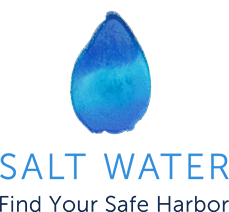Pia Sieroty Spector is a 3rd generation Californian. At age 18, she abandoned the smoggy Los Angeles sprawl for Northern California where she studied architectural history at UC Santa Cruz. She then ventured to the humid and mysterious south where she studied, traveled abroad and received a Masters in Art History from Emory University. She headed back to L.A. for a three year visit which enabled her to work in her field, marry in her faith and, upon mutual agreement, head back north to make a home, two stellar daughters and a full life in the River City.
Twenty-seven years later, Pia is the executive director of Bread of Life Center, a facilitator at Writing as Transformative Art and a published poet who is now focused on the art of creative nonfiction. She is also a lover of all things delicious: language, food, wine, art, people and travel.
Just about seven years ago, as I was ending a bad marriage, helping my teenage girls find their way, trying to heal me and us and, simultaneously, dreading all the work I needed to do as a woman, a mom, a daughter, a partner and a professional, I fell into a writing group. This weekly gathering of men and women slowly changed me — my core, my voice, my outlook and my life.
At the time, I was working for a local nonprofit in an administrative position, and I spent a good part of my day registering people for healing workshops. I knew Bread of Life was a special place — its mission is to cultivate attitudes, skills and practices that transform lives, organizations and communities. I knew that I was ready to transform, but I was not sure how I would accomplish what seemed to be a big, messy and time consuming task when, truth be told, I could barely make it through a staff meeting without crying. One day (I remember it as if I had been struck by lightening), I decided that I, too, should take part in at least one of the healing workshops Bread of Life was offering. I choose to start with the writing group and possibly add into the mix a group that offered studio art techniques to heal grief.
Ah … little did I know that writing was a very accessible art … that writing had been my art, my salvation. It was the way I worked through healing at various points in my life — the death of my college sweetheart when we were 22 years old, my parents’ divorce, my father’s behavior with women, my mother’s survivor trauma, my own questions about faith and love, my daughters’ struggles and their growing pains. I did all of that by writing, first by letter, then by email, to a best friend in Southern California, to a rabbi friend, to other close friends all over the globe. It hadn’t dawned on me, until I sat down that first time to write in community, that all those emails had been writing that had helped heal my soul at different points in my life.

What I found in the writing group at Bread of Life was a method. We wrote in the Amherst Writers and Artists method (AWA) which was developed by Pat Schneider, an adjunct professor, editor and writer. Her innovative method allows for many types of groups — a grief house, a group of at-risk children, a group of inmates, women in public housing projects, people who are terminally ill — to write safely and without judgment.
Her method makes for a safe group dynamic through rules of positive feedback only: What do the listeners (the other people in the group) like? What is strong? What stays with us? Additionally, the method allows the group to receive each other’s writing as fiction. As each member of the group reads, they are referred to as the narrator. These guidelines allow people to feel safe enough to risk telling their stories. The healing comes from the writing, the reading, the telling and the positive feedback.
The human family is a species of storytellers, and to deny ourselves the outlet to write, to explore our feelings and to read out loud and share is to deny ourselves the opportunity to heal, and maybe, most important of all, the opportunity to heal in community.
I have since gone on to facilitate AWA writing groups in my home, and I also write with an AWA group as a participant. Both groups continue to feed my soul and open my mind to the human condition. As I listen to pieces on love, sorrow, suffering, grief, fear and yes, success, too, I hear the sheer magnitude and variety of human experience. Over and over, with every write in every group, my ability to be compassionate is broadened, and my ability to heal my soul is renewed.
There is a stunning beauty in every person and their particular human story. Whether that story is told one-on-one or in writing groups, in emails, on Facebook posts or even on Twitter, storytelling remains the great connector and healer.







Hear, hear! You’ve gone from feeling like a fledgling writer in the Bread of Life group to a supremely confident AWA facilitator. All of it, of course, helps people, including you, heal. So proud of you and the work you’re doing!